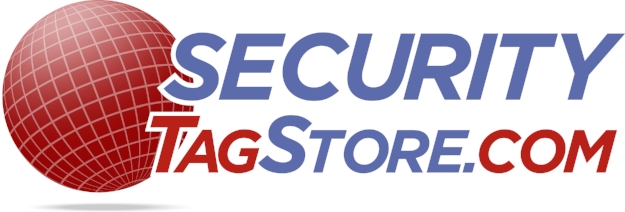Associate attempting to open a security tag with pliers.
In the ongoing battle against retail theft and shrinkage, technology has continuously evolved to help retailers protect their high-value merchandise. The introduction of advanced anti-theft tags like the Sensormatic SuperTag 4 is a significant step forward, offering enhanced protection against organized retail crime (ORC) and shoplifting. However, these innovations often come with a downside: the need to upgrade or replace existing equipment, such as detachers. While security improvements are necessary, the requirement to replace all detachers across stores can pose a number of challenges for retailers, both operationally and financially. Below are some of the negative effects retailers may face when introducing tags that require new detachers.
1. Increased Upfront Costs
One of the most immediate drawbacks of adopting new tags that require specialized detachers is the significant upfront cost associated with replacing existing hardware. Retailers, especially those with a large network of stores, need to purchase and install new detachers across all locations. For some, this cost may be prohibitive, particularly in the current economic climate where margins are thin and investment in loss prevention technology competes with other critical business expenses.
2. Operational Disruptions
Switching to a new detacher system involves more than just purchasing new hardware; it also requires training staff on how to use the new equipment. This can lead to disruptions in day-to-day operations as employees adapt to the new tools. In fast-paced retail environments, this learning curve can result in longer checkout times, frustrating both staff and customers. Furthermore, retailers must schedule installation and training during hours that minimize disruption, which can be a logistical challenge in itself.
3. Compatibility Issues with Existing Systems
Retailers who have invested heavily in legacy systems often expect that new technologies will integrate smoothly with their existing infrastructure. However, tags like the SuperTag 4, which do not work with legacy detachers, force retailers to discard perfectly functioning equipment in favor of the new system. This lack of backward compatibility can lead to wasted resources, as retailers are left with obsolete detachers that may have been costly to implement originally.
4. Impact on Small and Medium-Sized Retailers
For large retail chains, the financial hit of upgrading detachers is significant but manageable. However, small and medium-sized retailers are far more vulnerable to these costs. While the SuperTag 4 may offer advanced protection, smaller retailers might find it difficult to justify the expense of replacing all of their detachers, leading them to either delay adoption or forgo the technology altogether. This creates a disparity between large and small retailers, where the latter are less equipped to combat ORC and shrinkage.
5. Potential for Increased Customer Frustration
In addition to the internal challenges, introducing new detachers can also affect the customer experience. As staff learn to use the new detaching systems, checkout times may slow, leading to longer wait times for customers. Furthermore, if the transition is not smooth and some stores experience technical issues with the new detachers, it can result in mistakes, such as tags not being removed from purchased items. This not only creates frustration for customers but can also lead to additional store visits to rectify the issue, further impacting customer satisfaction.
6. Environmental Impact
There’s also an environmental cost to consider. Replacing large quantities of legacy detachers contributes to electronic waste, as older devices are often discarded instead of repurposed. Given the growing importance of sustainability in retail, the forced disposal of old hardware contradicts the efforts many retailers are making to minimize their environmental footprint. Retailers might have to weigh the benefits of enhanced security against the environmental impact of upgrading their equipment.
7. Disruption of Multi-Vendor Ecosystems
Many retailers use security solutions from multiple vendors, especially if they operate in different regions or sell different types of products. Introducing a tag system like SuperTag 4 that is incompatible with legacy detachers can create a fragmented security ecosystem, where stores may need to maintain different detaching systems for different products or regions. This creates further complexity in operations, from staff training to inventory management, and can complicate efforts to streamline processes.
Conclusion: Is It Worth the Investment?
There’s no doubt that advanced tags like the SuperTag 4 provide significant advantages in loss prevention, especially in tackling organized retail crime and high-value merchandise theft. However, retailers must carefully consider the hidden costs and operational challenges of upgrading to a system that requires new detachers. The initial financial investment, operational disruptions, and long-term impacts on both staff and customer experiences should be weighed against the potential security benefits.
For many retailers, particularly small and medium-sized ones, the decision to adopt these new systems may come down to a cost-benefit analysis. In some cases, the benefits of advanced security may justify the expense of upgrading equipment, while in others, the costs may outweigh the advantages. Ultimately, retailers must evaluate their specific needs, risks, and resources to determine whether the transition to a new tag and detacher system is the right move for their business.


